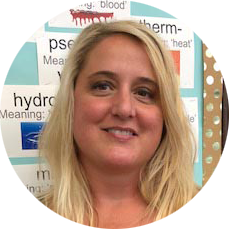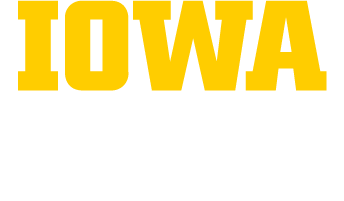STEM Excellence & Leadership is an out-of-school program that takes place in rural school districts throughout the state of Iowa. Teachers discover talented middle-school students with interests in math and science, increase their aspirations, and engage them in advanced, in-depth coursework to prepare them for STEM opportunities at the highest levels.
Frequently Asked Questions
What is STEM Excellence and Leadership?
The STEM Excellence and Leadership program is implemented in K–12 schools, designed for students in grades 6-8, and provides university-based support for math and science teachers. The goal is to discover students early and provide an intervention of specialized programming to promote their academic and social-emotional development. STEM Excellence and Leadership has two major components:
- an out-of-school enrichment curriculum in mathematics and science for high-ability middle school students, and
- professional development for teachers in place-based enrichment curriculum, math and science content, and gifted education.
With initial funding from the Jack Kent Cooke Foundation and current funding from the National Science Foundation, the Belin-Blank Center works jointly with school districts to serve high-potential, rural students.
Why STEM Excellence and Leadership?
Research offers extensive support regarding the positive impact of university-based programs—such as STEM Excellence and Leadership—on high-ability students. “If one reads the five lessons that can be learned from this [synthesis of research], one quickly comes to understand that there is a need to find some means to group gifted learners at times for their learning and socialization, along with a need to move them ahead in some form when their learning out-strips the curriculum they are offered” (Rogers, 2007, p. 382).
Furthermore, studies that investigate course selection among high school students found that studying algebra in 8th grade leads to students taking additional math courses in high school and increases opportunities for post-high school academics including college (Spielhagen, 2006). One goal of the STEM Excellence and Leadership program is to encourage students to enroll in algebra by 8th grade. In a STEM Excellence and Leadership pilot study, we found that students who completed the program were more likely to take algebra in grades 7 or 8 than in grade 9. Early entrance to algebra put these students on a trajectory to take calculus before college. Even though small, rural schools
in Iowa are less likely to offer calculus on site, students in the pilot project had access to calculus via the Iowa Online Advanced Placement® Academy (IOAPA).
STEM Excellence and Leadership focuses on math and science in grades 6-8 as a conduit to more advanced coursework in high school. For example, Advanced Placement® courses available through IOAPA are provided at no charge to schools. Individual students who qualify for free and reduced lunch take the AP® exams at a reduced fee.
Who can participate in STEM Excellence and Leadership?
STEM Excellence and Leadership will directly serve high-ability middle-school students living in high-need, small or rural Iowa school districts. To become a STEM Excellence and Leadership school and establish a dynamic partnership with the University of Iowa’s Belin-Blank Center, schools completed an application process in January 2015. The three ranked factors that guided the selection process were: 1) high percentages of families who qualify for free and reduced lunch (FRL), 2) demographics that indicate predominately rural or small schools, and 3) a history of participation in the Iowa Online Advanced Placement® Academy (IOAPA).
Why does STEM Excellence and Leadership use a place-based curriculum?
STEM Excellence and Leadership is an out-of-school math and science enrichment program. The program provides 96 hours of rigorous curricula in math and science for academically capable students from under-served, rural schools. The STEM Excellence and Leadership curriculum includes multiple units delivered over 24 weeks of the school year (four hours/week outside of the school day). The curriculum is flexible so that teachers can apply their expertise, contribute their creativity, leverage community strengths and expand as necessary. This out-of-school program is designed to be offered over a three-year period for students in grades 6–8.
Academic out-of-school programs have many advantages for high-ability students. They provide opportunities for in-depth study and enriched learning environments where the pursuit of learning is valued (Lee, Matthews, & Olszewski-Kubilius, 2008). The positive effects of out-of-school activities on educational success for students who are at risk due to poverty have been documented (Kitano, 2007).
How does the program determine the level of academic challenge appropriate for students?
Many bright students have hit the ceiling of grade level achievement tests, limiting the usefulness of these scores for curriculum planning purposes. The results of an above-level test like those available through a talent search can tell us what concepts students are ready to learn.

The program just gives them access to opportunities they wouldn’t have otherwise. There are less resources in rural areas compared to cities. After-school tutoring and academic camps don’t exist in the same numbers or at all.
Andrea Reilly - Atlantic Middle School
Publications & Media
An evidence-based STEM talent development program that bridges excellence gaps
Abstract
The pipeline of highly trained STEM (science, technology, engineering, and mathematics) professionals has narrowed in recent decades, forcing society to re-examine how schools are discovering and developing STEM talent. Of particular concern is the finding that rural students attend post-secondary schools at lower rates than their urban counterparts, and when they do attend, they are less likely to graduate from STEM programs. One reason may be that they are not prepared for advanced STEM coursework because they lack access to essential STEM talent-development programs in middle or high school. This creates excellence gaps, which exacerbate the narrowing STEM pipeline to the workforce. To address this, we formed a university–school partnership to develop an outside-of-school STEM talent development program, called STEM Excellence, for rural middle-school students who attend under-resourced schools. The aim of STEM Excellence was to increase students’ achievement and aspirations while empowering their teachers to develop local STEM programs grounded in developmental psychology theories. STEM Excellence integrated the Talent Development Megamodel Principles of ability, domains of talent, opportunity, and psychosocial variables. STEM Excellence also recognized the interplay of multiple person–environment systems as presented in the Bioecological Systems Model.
Assouline, S. G., Mahatmya, D., Ihrig, L., Lynch, S., & Karakis, N. (2023). Annals of New York Academy of Science (special issue).
Developing students' science, technology, engineering, and mathematics talent in rural after-school settings: Rural educators' affordances and barriers
Abstract
This study uses a naturalistic inquiry approach to investigate how rural educators navigate the affordances and barriers of implementing an out-of-school program to identify and develop middle school STEM talent in rural communities. At the time of this study, the STEM program was in its fourth year of implementation. Participants included 34 educators and 324 students in Grades 6–8 across 10 school districts in a predominately rural state. We used maximum variation purposive sampling to select 3 of the 10 districts as case study sites. The cross-case analysis resulted in the themes of (a) exercising local control, (b) expanding community for advanced STEM learning, and (c) leveraging the intersectionality of rurality, local agency, and expanded resources. One implication is that when supported with resources, rural educators will leverage the systems of their schools and communities to create robust ecosystems for advanced STEM talent development.
Ihrig, L., M., Assouline, S., G., Mahatmya, D., & Lynch, S. (2022). Journal of Education of the Gifted.
Nurturing STEM talent in rural settings.
Abstract
Rural schools, especially smaller ones, offer enormous opportunities for teachers to get to know their students and to cultivate their academic talents. However, students with potential in science, technology, engineering, and mathematics (STEM) face specific obstacles to having their talents fully realized in rural schools. Joni Lakin, Tamra Stambaugh, Lori Ihrig, Duhita Mahatmya, and Susan G. Assouline describe the STEM Excellence and Leadership project from the University of Iowa, which seeks to equip rural teachers in grades 5-8 with the skills and knowledge to recognize and grow STEM talent in rural areas. Examples of success and lessons learned are shared.
Lakin, J. M., Stambaugh, T., Ihrig, L. M., Mahatmya, D., & Assouline, S. G. (2021). Phi Delta Kappan, 103(4), 24-30.
High-achieving rural middle-school students’ academic self-efficacy and attributions in relationship to gender
Abstract
This research investigates high-achieving, rural middle-school students’ academic attributions and self-efficacy. The study sample (n = 77) included middle-school students attending schools in rural districts in a predominately rural, Midwestern state in the United States (U.S.). There was high participation in the Free and Reduced Lunch (FRL) program in the sample (average of 45.1% among the 8 participating districts). Students attending rural, under-resourced schools in the U.S. are vulnerable with respect to full academic development. We identified academic potential through the administration of a nationally standardized above-level test. Although there were no differences in the study sample’s female and male students’ scores in any of the four subject areas on the above-level test, there were differences for some of the psychosocial variables. A greater percentage of high-achieving males attributed both general school success and math success to ability; a greater percentage of high-achieving female students attributed general school success and math success to effort. Students in rural school districts often lack access to advanced educational opportunities, which may shape their beliefs about academic potential and self-efficacy and impact decisions regarding advanced coursework. Implications for school practitioners to foster the immediate and long-term talent development of high-achieving rural students are discussed.
Assouline, S. G., Mahatmya, D., Ihrig, L., & Lane, E. (2020). High-achieving rural middle-school students’ academic self-efficacy and attributions in relationship to gender. High Ability Studies, 1-27.
Small Town, Big Talent: Identifying and Supporting Academically Promising Students in Rural Areas
Abstract
Academically talented students exist in every community, and schools across the nation strive to meet their educational needs. Not all K-12 students are served equally, however. Due to their geographic isolation and smaller student populations, academically talented students in rural schools may be overlooked. Educators and enrichment providers in rural settings confront many of the same obstacles that hinder the development of academically talented urban or suburban students, as well as additional geographic, economic, social, cultural, and educational constraints. With nearly 9 million students currently attending K-12 schools in rural areas — nearly half of whom are also eligible for free or reduced school lunch — there is a need for more high-quality enrichment opportunities to serve these talented rural students. Recognizing this need, the Jack Kent Cooke Foundation has provided over $3.3 million in grants to outstanding providers of educational enrichment in rural areas since 2012. In extensive interviews, rural education experts in our grantee organizations shared their practical knowledge of the best ways to identify academically talented students in rural areas, provide academic enrichment, and help these students navigate their unique social, cultural, and emotional landscape. Combining their best practices with a review of already existing literature, we distill the major conclusions into 14 actionable recommendations, which we hope will be useful to a wide range of organizations, educators, and other interested parties.
Lynn, R., & Glynn, J. (2019). Small Town, Big Talent: Identifying and Supporting Academically Promising Students in Rural Areas.
STEM excellence and leadership program: Increasing the level of STEM challenge and engagement for high-achieving students in economically disadvantaged rural communities.
Abstract
High-achieving students in economically disadvantaged, rural schools lack access to advanced coursework necessary to pursue science, technology, engineering, and mathematics (STEM) educational and employment goals at the highest levels, contributing to the excellence gap. Out-of-school STEM programming offers one pathway to students’ talent development. Using a concurrent triangulation mixed-methods research design, this study was conducted to evaluate the experiences of 78 high-achieving students and their 32 teachers, participating in an extracurricular, school-based, STEM talent development program for rural students from economically disadvantaged communities. Findings suggest that students and teachers expressed satisfaction with program participation and that they thought more creatively and critically about their work. Results also showed that students’ perceptions of the mathematics and science activities were significantly different, which informs ways to improve programming for future high-achieving, rural students. These findings expand the literature supporting the use of informal STEM education environments for underserved gifted populations to increase engagement in and access to challenging curricula.
Ihrig, L. M., Lane, E., Mahatmya, D., & Assouline, S. G. (2018). STEM excellence and leadership program: Increasing the level of STEM challenge and engagement for high-achieving students in economically disadvantaged rural communities. Journal for the Education of the Gifted, 41(1), 24-42.
Closing the excellence gap: Investigation of an expanded talent search model for student selection into an extracurricular STEM program in rural middle schools
Abstract
High-potential students from underresourced rural schools face barriers that reduce options for academic advancement, which widens the excellence gap between them and their more affluent, but similar ability peers. The goal of this study was to investigate the effectiveness of an expanded above-level testing model to identify high-potential rural students for an extracurricular math and science enrichment program. Results from our analyses indicated that a more inclusive talent pool differentiated among high achievers to find greater percentages (13%) of talented students compared with most gifted programs (3% to 5%) or Talent Search programs (5%). Overall, students’ math and science scores were related to a 75% and 50%, respectively, greater odds in being identified for the extracurricular program. Regardless of program participation, all talent pool students increased their math and science achievement; however, there were some significant gender differences.
Assouline, S. G., Ihrig, L. M., & Mahatmya, D. (2017). Closing the excellence gap: Investigation of an expanded talent search model for student selection into an extracurricular STEM program in rural middle schools. Gifted Child Quarterly, 61(3), 250-261.
STEM Excellence: A model for equalising opportunities for STEM
Nurturing Potential: Inspiring Excellence, our mission-driven tagline, captures the philosophy underlying the extensive student and teacher programming provided through the University of Iowa’s Belin-Blank Center for Gifted Education and Talent Development. Excellence, the last word in the tagline, holds significance for multiple reasons, beginning with the origins of the word.
https://www.openaccessgovernment.org/opportunities-for-stem/74466
The STEM Excellence and Leadership Program
Recognizing students with great potential and supporting them in their academic endeavors is of utmost importance, particularly for disadvantaged children from rural areas or low-income families. Dr. Susan Assouline and Dr. Lori Ihrig, at the University of Iowa's Belin-Blank Center for Gifted Education and Talent Development, which is part of the UI College of Education, have developed a program to support high-ability students in their transition to high school and completion of higher-level courses.
https://www.scientia.global/dr-susan-assouline-dr-lori-ihrig-the-stem-excellence-and-leadership-program/
How We’re Supporting Academic Talent in Rural Iowa
The Jack Kent Cooke Foundation recently published a new report on rural education programs that develop academic talent. The report, “Small Town, Big Talent: Identifying and Supporting Academically Promising Students in Rural Areas”, highlighted the work that is being done across the state of Iowa through the STEM Excellence and Leadership program, administered by the Belin-Blank Center.
https://belinblank.wordpress.com/2019/12/04/how-were-supporting-academic-talent-in-rural-iowa/
Rural Iowa STEM Teachers Learn from a Legend in Gifted Education
We Love a Good Field Trip
We were lucky enough to tag along when sixth graders from the Eddyville-Blakesburg-Fremont STEM Excellence and Leadership program visited the University of Iowa State Hygienic Lab (SHL) with their teacher, Maura Young. Their journey started with students investigating a hypothetical zombie outbreak at Iowa county fairs across the state. Through this simulation, students learned about the role of the SHL in disease detection across the state.
https://belinblank.wordpress.com/2017/10/18/we-love-a-good-field-trip/
Bringing Math and Science to Life
Funding
In 2014 the Belin-Blank Center received a $500,000 Talent Development Award from the Jack Kent Cooke Foundation for its STEM Excellence and Leadership (SEAL) program for students in Grades 5 to 7. In 2017, building on the success of SEAL, JKC awarded an additional $200,000 Rural Talent Initiative award to expand the program to students in Grades 8 and 9 in ten rural Iowa school districts.
August 2017 saw the National Science Foundation award the Belin-Blank Center a $1.9 million Advancing Informal STEM Learning grant. The NSF award supports the Belin-Blank Center's efforts to investigate the best instructional practices of STEM Excellence program teachers, positioning the Belin-Blank Center, and the University of Iowa, as leaders in the area of STEM learning in rural schools.




